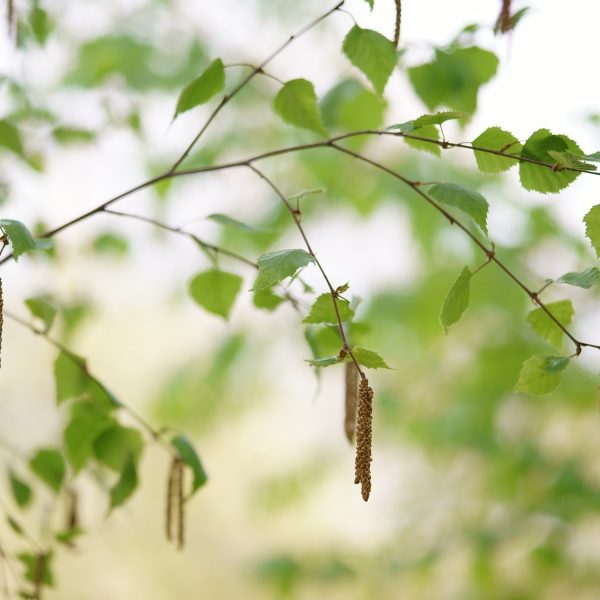-
How does it feel?
The first impression in tasting devil’s claw is a dry bitter taste (due mainly to its most active constituent harpagoside), with a very slight sweetness. The bitterness is not excessive but lingering and persists in the mouth for many minutes.
It is notable that indigenous Kalahari tribespeople used laolao (devil’s claw) not only for joints and muscle pains, that the other use of devil’s claw was as a digestive remedy and to reduce fever.
-
What can I use it for?
Devil’s claw is specifically used in modern times as a natural and safe treatment for back pain, particularly lower back pain, and osteoarthritis. It should be taken in relatively high doses for at least a month to see real benefits.
-
Into the heart of devil’s claw
Although modern laboratory research has not fully explained its effects it is clear that they are different from the usual aspirin-based or steroidal medicines most often used in conventional treatments for arthritis, and there are no reports of stomach or other digestive upsets. It is best to see this remedy as a gentle but potentially effective contribution to managing persistent aches and pains.
-
Traditional uses
The use of devil’s claw was prominent amongst the indigenous San and Khoi people of southern Africa, and was further adopted by Bantu-speakers. These peoples used the root tuber for a range of conditions including joint and muscle pains, digestive problems, headaches and fever management, and externally for skin inflammations, wounds, ulcers, boils and the relief of pain.
-
Traditional actions
Herbal actions describe therapeutic changes that occur in the body in response to taking a herb. These actions are used to express how a herb physiologically influences cells, tissues, organs or systems. Clinical observations are traditionally what have defined these actions: an increase in urine output, diuretic; improved wound healing, vulnerary; or a reduction in fever, antipyretic. These descriptors too have become a means to group herbs by their effects on the body — herbs with a nervine action have become the nervines, herbs with a bitter action are the bitters. Recognising herbs as members of these groups provides a preliminary familiarity with their mechanisms from which to then develop an understanding of their affinities and nuance and discern their clinical significance.
-
Traditional energetic actions
Herbal energetics are the descriptions Herbalists have given to plants, mushrooms, lichens, foods, and some minerals based on the direct experience of how they taste, feel, and work in the body. All traditional health systems use these principles to explain how the environment we live in and absorb, impacts our health. Find out more about traditional energetic actions in our article “An introduction to herbal energetics“.
Western energetics
-
What practitioners say
In modern herbal clinical practice devil’s claw is used almost entirely as a herbal substitute for anti-inflammatory medicines. Its indigenous use however reflects its bitter digestive prospects and this may merit further exploration in modern practice.
Evidence and experience suggests that devil’s claw needs to be provided in relatively large doses for real benefit, with over 3 grams per day over at least a month or two for back pain and arthritis. It is also likely to be more effective for moderate rather than severe problems.
-
Research
There is little consistent indication of the way in which devil’s claw could reduce inflammation but some COX2-mediated reduction in NF-kappaB activity has been reported for harpagoside (2).
The 2016 Cochrane review on herbal treatment for low back pain (the leading source of evidence-based systematic reviews) has concluded that with caveats for methodological quality devil’s claw has an impact on arthritic pain greater than placebo (3). An earlier review had concluded that there was moderate evidence of benefit in osteoarthritic conditions as well as low back pain for devil’s claw preparations delivering between 50-100mg harpagoside (4).
-
Did you know?
Devil’s claw has a nasty way of propagating itself. The name is supposed to have arisen from the desperate dance that animals use in an attempt to extricate from their feet the grappling claws on the fruit.
Additional information
-
Botanical description
Devil’s claw is the root from a plant native to the Kalahari Desert in southwest Africa. It is a weedy, perennial plant with creeping stems spreading from a tuberous rootstock. The greyish-green leaves are placed either alternately or directly opposite each other. The characteristic fruits have long branching arms with anchor-like hooks (which assist their dissemination by animals) and which give the plant its most common name. The primary root descends up to 2m with secondary roots spreading out for up to 1.5m on all sides, which allows it to conserve water.
Alternative botanical names:
Harpagophytum zeyheri is commonly mixed with commercial samples of H. procumbens and is difficult to differentiate from it.
Two subspecies of H. procumbens are defined: subsp. procumbens and subsp. transvaalensis.
-
Common names
- Grapple plant (Eng)
- Teufelskralle
- Trampelklette (Ger)
- Griffe du diable (Fr)
- Duiwelsklou (Afrik)
- Laolao (Indigenous)
-
Safety
Devil’s claw has shown itself to have a good safety profile in toxicological studies (5). A systematic review of published clinical trials on devil’s claw concluded adverse effects were comparable with placebo (6).
-
Dosage
3-6 g/day of the dried root taken between meals.
-
Constituents
- Iridoid glycosides (0.5 to 3.0%), primarily harpagoside, isoharpagoside, harpagide, procumbide
- Triterpenes
- Phytosterols
- Phenolic acids and glycosides,
- Flavonoids.
- Sugars.
It is possible that the iridoid glycosides are converted into an active monoterpene alkaloid aucubinine B by bacterial species in the gut microbiome (1). This could be a significant factor in modulating inflammation and would add to the variability in effects that have been noted in clinical trials.

-
References
- Baghdikian B, Guiraud-Dauriac H, Ollivier E, et al. (1999) Formation of nitrogen-containing metabolites from the main iridoids of Harpagophytum procumbens and H. zeyheri by human intestinal bacteria. Planta Med. 65(2): 164-6. doi: 10.1055/s-2006-960456
- Huang TH, Tran VH, Duke RK, et al. (2006) Harpagoside suppresses lipopolysaccharide-induced iNOS and COX-2 expression through inhibition of NF-kappa B activation. J Ethnopharmacol. 104(1-2):149-55. doi: 10.1016/j.jep.2005.08.055
- Gagnier JJ, Oltean H, van Tulder MW, et al. (2016) Herbal Medicine for Low Back Pain: A Cochrane Review. Spine (Phila Pa 1976). 41(2): 116-33. doi: 10.1097/BRS.0000000000001310
- Gagnier JJ, Chrubasik S, Manheimer E. (2004) Harpgophytum procumbens for osteoarthritis and low back pain: a systematic review. BMC Complement Altern Med. 4: 13. doi: 10.1186/1472-6882-4-13.
- EMEA (European Medicines Agency), 2009. Assessment Report on Harpagophytum procumbens DC. and/or Harpagophytum zeyheri Decne, Radix
- Vlachojannis J, Roufogalis BD, Chrubasik S. (2008) Systematic review on the safety of Harpagophytum preparations for osteoarthritic and low back pain. Phytother Res. 22(2): 149-52. doi: 10.1002/ptr.2314































